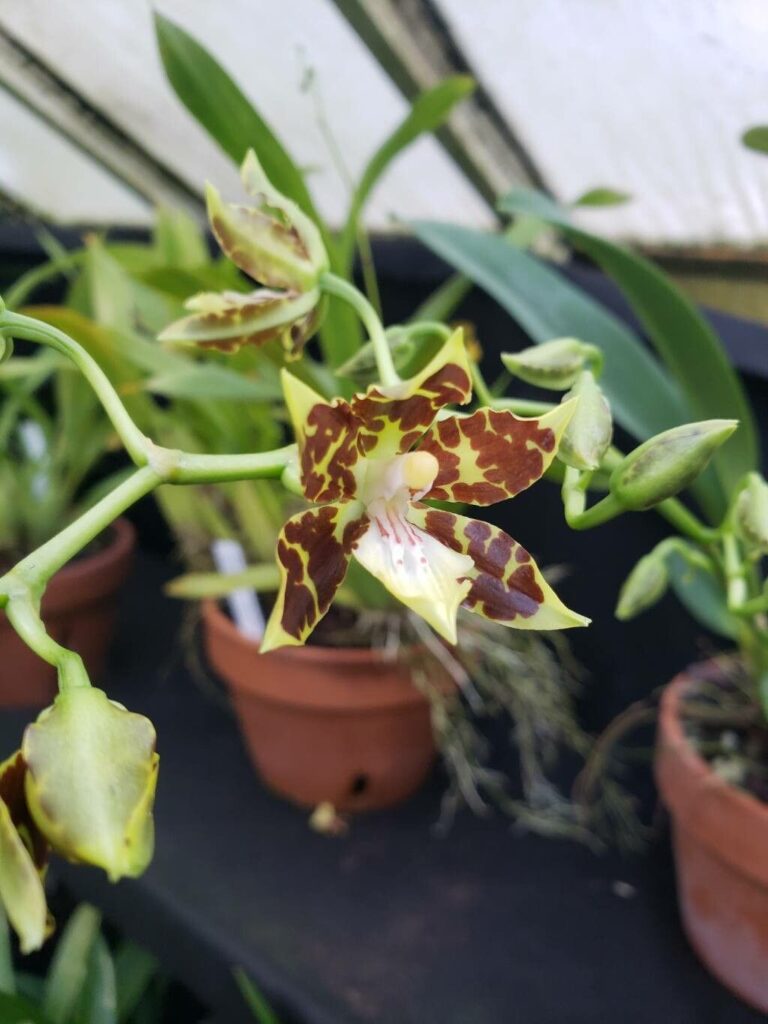Orchid Magic: How to Propagate Your Oncidium maculatum
The Oncidium maculatum, also known as the “Dancing Lady Orchid,” is a stunningly beautiful plant that captivates with its vibrant yellow blooms and intricate markings. But did you know that you can multiply your enjoyment of this orchid by starting new plants from existing ones? Propagation of Oncidium maculatum can be a rewarding experience, allowing you to share this floral masterpiece with others or simply expand your own orchid collection.
Let’s delve into the methods you can use to propagate your Oncidium maculatum and explore the best practices for successful growth:
1. Division
This is the easiest and most common method of propagation for Oncidium maculatum. As the orchid develops, it forms multiple pseudobulbs. When the plant becomes overcrowded, you can divide it into smaller portions containing at least three pseudobulbs each.
Here’s how:
- Prepare: Sterilize your tools (knife or pruning shears) with alcohol to prevent infections.
- Separate: Carefully remove the plant from its pot and gently separate the pseudobulbs. Aim for clusters with healthy roots attached.
- Potting: Repot each division in a pot slightly larger than the root system using a well-draining orchid potting mix. Water thoroughly after potting.
2. Keiki
Keikis (pronounced “kay-kees”) are small, baby plants that often form on the flower stalk or on the base of the pseudobulbs. They develop their own roots, indicating they are ready for separation.
Here’s how to encourage and remove them:
- Encourage Keiki Formation: Apply a growth hormone paste to the orchid’s flower stalk or base of the pseudobulb. This stimulates keiki growth.
- Separation: Once the keiki has developed several roots, carefully cut it away from the parent plant, ensuring you preserve the root system.
- Potting: Pot the keiki in a small pot with orchid potting mix and provide a humid environment.
3. Seed Propagation (Difficult)
Seed propagation is the most challenging method and requires significant expertise and specialized equipment. Orchid seeds are incredibly tiny and lack the nutrients needed to germinate. They need a sterile environment and specific fungal symbiosis for successful growth. While possible, it’s best left to experienced orchid growers.
Important Considerations:
- Timing: The best time for propagation is after the flowering period of the Oncidium maculatum. This gives the plant time to recover before a new growth cycle.
- Environment: Provide the newly-propagated plants with a humid environment by placing them in a closed plastic bag or humid propagator.
- Lighting: Ensure the new orchids receive bright, indirect light. Avoid direct sunlight which can scorch their delicate leaves.
- Watering: Water carefully, allowing the potting mix to dry out slightly between waterings. Avoid overwatering, as this can lead to root rot.
Conclusion:
Propagating your Oncidium maculatum is a rewarding adventure that allows you to grow your own collection and share these beautiful orchids with others. With a bit of patience and careful attention to detail, you can successfully create new plants using division or keiki propagation methods. Enjoy the process and revel in the charm of these “dancing” orchids that are sure to bring joy to your home!
